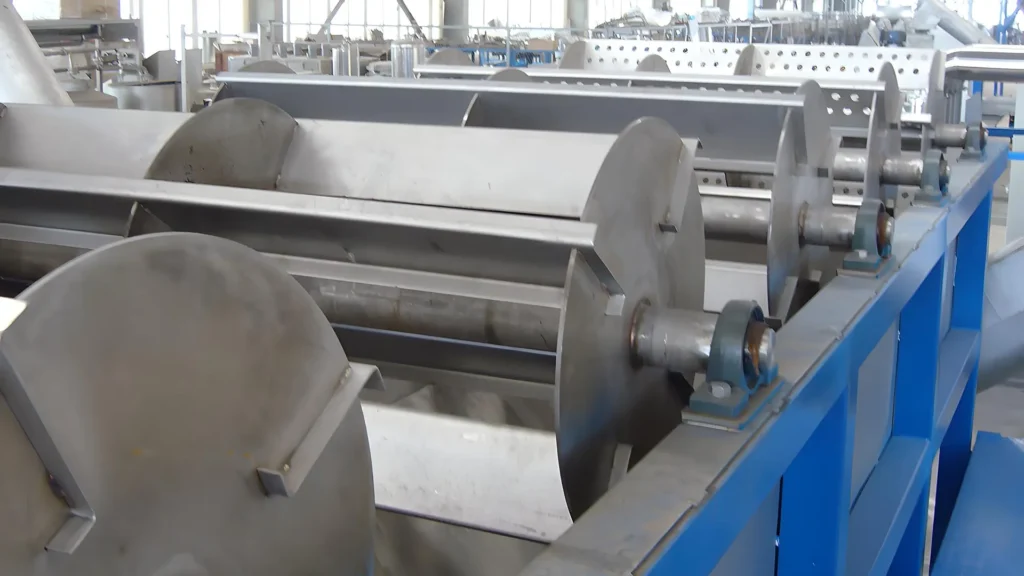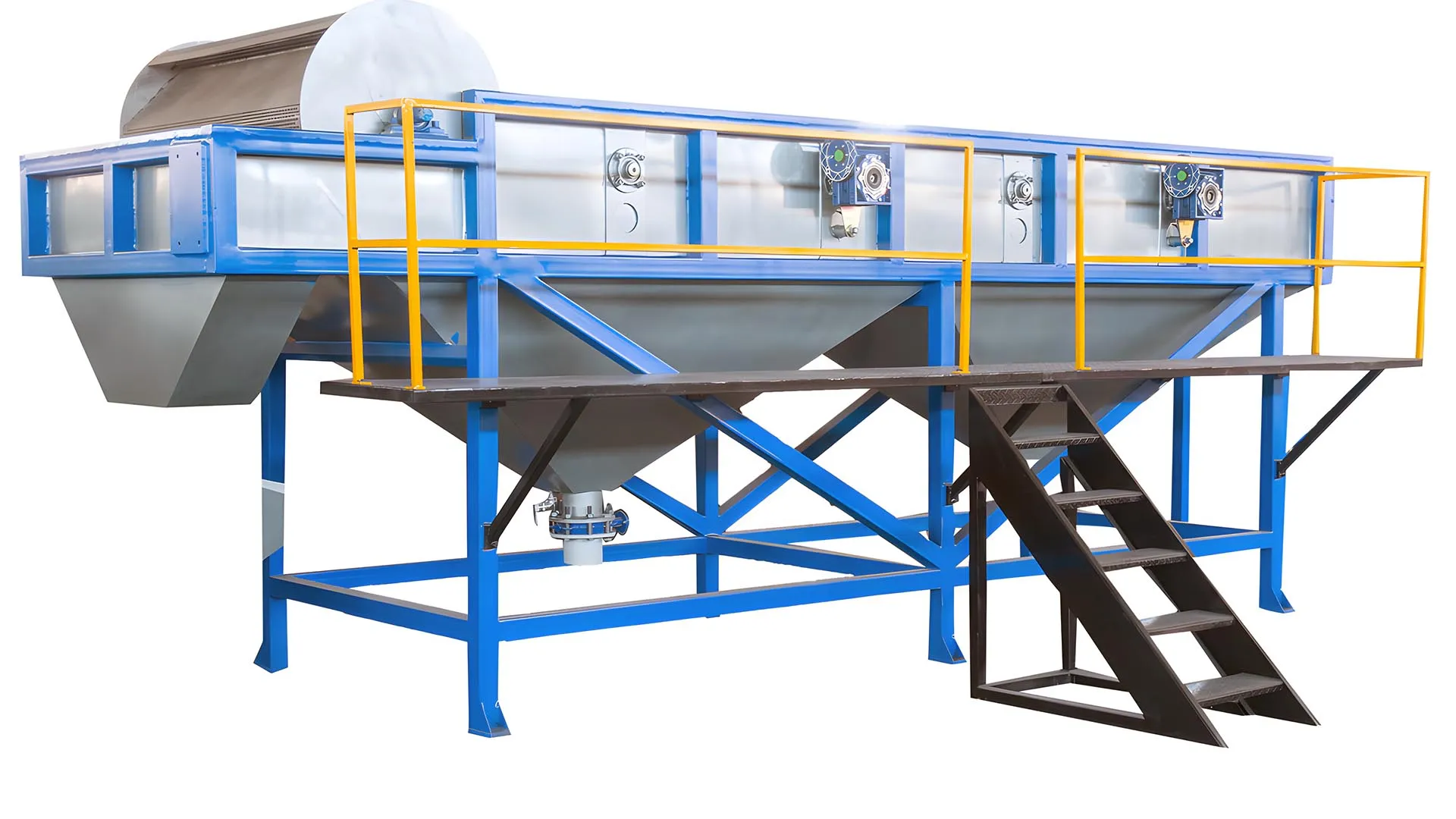In the world of plastics recycling, the precise and efficient separation of different polymer types is paramount. The Floating Separation Tank stands as a cornerstone technology in this critical process. This essential piece of machinery utilises the simple yet brilliant principle of water density to expertly segregate materials like polypropylene (PP) and polyethylene (PE) from a mixed plastic stream. By doing so, it not only guarantees a high purity of separated plastics but also performs a preliminary cleaning, preparing the materials for the next stage of recycling. Let’s explore the mechanics of this indispensable system and understand why it is fundamental to modern, effective plastics recycling.
The Critical Role of the Floating Separation Tank
As global demand for sustainable solutions grows, the need for highly efficient plastics recycling processes has never been more acute. The Floating Separation Tank directly addresses a key industry challenge: separating plastics that have very similar visual and physical characteristics. Given that PP and PE are two of the most prolific plastics in consumer and industrial goods, from packaging films to automotive parts, their successful recovery and recycling carry immense economic and environmental significance. Achieving a pure stream of PP and PE is the first step towards producing high-quality recycled pellets that can be reintroduced into manufacturing.
How Does the Floating Separation Tank Work?
The Principle of Density-Based Separation
The operational principle of the floating separation tank is elegant in its simplicity but powerful in its application. It all comes down to density. Water has a density of approximately 1 g/cm³. The system leverages this constant to distinguish between different materials in the incoming plastic flake stream.
- Sinking Fractions (Heavy Plastics): Materials with a density greater than water, such as Polyethylene Terephthalate (PET), Polyvinyl Chloride (PVC), and Acrylonitrile Butadiene Styrene (ABS), will sink to the bottom of the tank. This fraction also includes non-plastic contaminants like dirt, stones, glass, and metal fragments, which are effectively removed.
- Floating Fractions (Light Plastics): Conversely, PP and PE plastics, having densities less than 1 g/cm³, will float on the water’s surface. Rotating paddles on the surface then gently guide this floating material towards a discharge conveyor, completing the separation.
Visualising the Workflow
To better illustrate the process, here is a simple diagram of the journey materials take within the Floating Separation Tank:
Floating Separation Tank Process Flow
Step 1: Infeed
Mixed plastic flakes enter the tank via a screw conveyor.
⬇
Step 2: Agitation & Separation
Plastics enter the water. Heavy fractions (PET, PVC, etc.) sink. Light fractions (PP, PE) float.
⬇
Step 3: Collection
Rotating paddles move floating PP/PE to an exit conveyor. Sinking materials are removed from the bottom by a separate conveyor.
⬇
Step 4: Discharge
Separated streams of clean PP/PE and heavy fractions are discharged for further processing.
Design Innovations for Enhanced Performance
Energycle’s newly redesigned Floating Separation Tank incorporates advanced features to boost washing efficiency and promote water conservation. A key innovation is the unique “W-shaped” sedimentation bottom. This intelligent design effectively partitions the tank, creating distinct zones for processing:
- Primary Separation Zone: The raw, mixed material stream is introduced here. This section is designed to handle the bulk of the contamination, allowing heavy dirt and debris to settle quickly. Water in this section may be filtered and changed more frequently to maintain effectiveness.
- Secondary Polishing Zone: The relatively clean, floating plastic then moves into the second half of the tank. Here, a final separation and cleaning occur in much cleaner water, ensuring a higher purity end-product with significantly lower overall water consumption.
Technical Specifications
Selecting the right Floating Separation Tank requires a close look at its technical specifications to ensure a perfect match for your operational needs. Below are the standard specifications for our models:
| Feature | Specification |
|---|---|
| Interior Width | 1000mm – 1800mm |
| Total Length | 4 – 7 metres |
| Interior Material | Type 304 Stainless Steel (for corrosion resistance) |
| Exterior Frame | Heavy-duty Carbon Steel (for structural integrity) |
| Paddle Motors | 1.5KW*2 (with frequency control for adjustable speed) |
| Certification | CE certification available |
Please note: We understand that every recycling line is unique. Larger and more powerful bespoke models can be engineered to your precise requirements, offering complete flexibility to suit different material types and throughput demands.

Conclusion: An Essential Investment for Quality Recycling
The Floating Separation Tank is far more than a simple bath; it is a sophisticated and indispensable machine in any serious plastics recycling operation. Its robust ability to cleanly segregate valuable PP and PE from other polymers and contaminants makes it a critical component for creating a high-quality, commercially viable recycled product. With modern design innovations that enhance both separation efficiency and environmental sustainability, investing in an Energycle Floating Separation Tank is a strategic step towards optimising your facility’s processing capabilities and profitability.
Request a Quote
Ready to enhance your recycling line? For the latest pricing and lead times on our range of Floating Separation Tanks, please contact our expert team using the form below. We are here to help you find the perfect solution for your needs.



